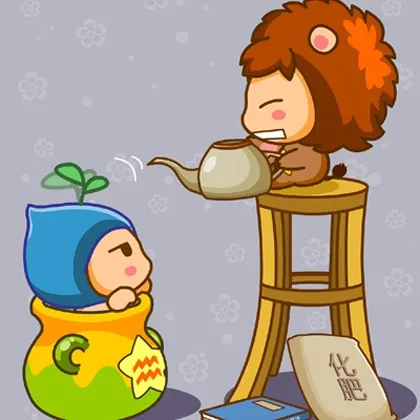She Made the World Fall in Love with Wild Lions: Joy Adamson and ‘Born Free’

The Woman Who Changed How We See Lions
At the turn of the year, a report titled ‘2017 National Key Protected Animal Attention Ranking’ surged across social media trends. Today, wildlife conservation awareness has become deeply rooted in public consciousness, making Joy Adamson’s pioneering work half a century ago even more remarkable. Her extraordinary journey with Elsa the lioness created a legacy that continues to inspire conservation efforts worldwide.
Encountering Elsa
January 3, 2018 marked the 38th anniversary of Joy Adamson’s passing (1910-1980). Born in Opava, then part of the Austro-Hungarian Empire and now in the Czech Republic, she is generally regarded as Austrian. The second of three daughters, her parents divorced when she was ten, leaving her to be raised by her grandmother. In her youth, she dreamed of becoming either a concert pianist or a respected doctor.
Fate, however, had different plans. Between the 1930s and 1940s, she experienced three marriages. Her first husband, Viktor von Klarwill, brought his 27-year-old wife to Africa in 1937 to escape the gathering war clouds over Europe. In Africa, she met and married botanist Peter Bally, who gave her the name “Joy.” Then, at a Christmas party in 1944, she encountered a somewhat disheveled British man who had arrived with his camel team—George Adamson, a game warden. Their acquaintance soon blossomed into love and marriage.
Life in the Kenyan Wilderness
The couple established their home in Kenya’s Northern Frontier District, a vast 300,000-square-kilometer savannah stretching from Mount Kenya to the Ethiopian border. European civilization had barely touched this region, with few white settlers and primarily indigenous African tribes living alongside the spectacular wildlife still featured in nature documentaries today. The Adamsons lived in a small town of about thirty white residents, mostly British colonial officials. George’s duties included preventing poaching and eliminating dangerous animals that threatened humans, often requiring extended trips into the wilderness. The courageous Joy became fascinated by this “treasure trove of wildlife” and accompanied her husband whenever possible.
The Fateful Day
On February 1, 1956, George received reports that a Boran man had been killed by a lion. While wild lions typically avoid humans, those that taste human flesh or are old and injured sometimes become man-eaters. George was dispatched to deal with the threat and shot the lioness. Only afterward did he discover why she had been so aggressive—she was protecting three tiny cubs, just days old, hidden in a rock crevice nearby.
Joy and the Three Lion Cubs
Feeling both guilty and remorseful, George brought the three cubs back to camp and gave them to Joy to raise. She already kept various young animals at home—elephants, buffalo, antelope, ostriches—making it something of a private zoo. But she had never raised lion cubs and soon found herself overwhelmed. The two largest cubs, “Big One” and “Lustica,” were sent to Rotterdam Zoo, while the smallest and most endearing, Elsa, remained with Joy. Little did anyone know that this decision would completely transform Joy’s life path.
The “Elsa Trilogy”
Initially, Elsa lived like a pet in the Adamson household. By two years and three months, she had grown into a beautiful, robust 36-kilogram lioness. Keeping an adult lion as a house pet was impractical and dangerous. Yet, “for Elsa’s freedom and to set an example for wildlife conservation,” Joy couldn’t bear to send her to a zoo’s confined existence. Conventional wisdom held that human-raised predators, lacking parental training in hunting skills, couldn’t survive if released into the wild. But the exploratory Joy was determined to try.
Re-wilding Elsa
The initial attempts failed. Elsa refused to leave her human “nannies,” was terrified by other lions’ roars, couldn’t hunt, and fell seriously ill. Joy persisted. After Elsa recovered, she set up camp in a game reserve and lived there with her for three months until Elsa finally learned to live independently. This marked a historic moment—Elsa became the first lioness successfully returned to the wild where she not only survived but eventually gave birth. She even brought her three cubs across a river to visit their human “grandparents.” The cubs cautiously observed the Adamsons, maintaining their distance until they saw how comfortable their mother was with them.
Born Free and Global Impact
This was nothing short of a miracle! Joy Adamson had pioneered a new approach to saving endangered wildlife. In her fifties, she embarked on another new endeavor: writing about Elsa’s return to the wild to help more people understand and cherish wildlife. In 1960, she compiled her notes into Born Free.
To her astonishment, Born Free took the world by storm. It became an international bestseller, particularly beloved by young readers, and was hailed as “the most outstanding animal literature of the 20th century.” It spent 13 weeks at the top of the New York Times bestseller list and remained on the list for nearly a year, thanks largely to Elsa’s moving story and numerous photographs. Joy went on to complete what became known as the “Elsa Trilogy” with Living Free: Elsa and Her Cubs (1961) and Forever Free: Elsa’s Pride (1962). These works vividly depicted the captivating reality of African savannah life. Their story was adapted into the film Living Free (1966), making Joy world-famous as a champion of nature conservation and Elsa an international animal star.
Legacy and Tragedy
The substantial royalties from books, films, and television made Joy a millionaire, but she didn’t rest on her wealth. Instead, she dedicated all proceeds to wildlife conservation, establishing the Elsa Conservation Trust. This significantly impacted global wildlife protection efforts, particularly in America where schoolchildren organized fundraising activities for the trust. Under Joy’s initiative, Canada also established an Elsa Foundation, and in 1975, she helped organize one in Japan during a visit.
Tragically, in January 1961, Elsa—beloved by readers worldwide—succumbed to babesiosis, a disease affecting felines. Joy poignantly documented her final moments in her writings.
“The Terrible Ones Are Not Animals, But Humans”
After Elsa’s death, her cubs were released into Kenya’s Shaba National Reserve, though contact was lost after nineteen months. Joy continued her work observing and researching wildlife while remaining a prolific writer. In 1977, she received Austria’s Cross of Honour for Science and Art.
During the filming of Living Free, an officer gifted Joy a six-month-old cheetah named Pippa. This provided an opportunity to study cheetah behavior, leading to two more books: The Spotted Sphinx (1969) and Pippa’s Challenge (1972). Her final book, published posthumously in 1980, was Queen of Shaba: The Story of an African Leopard.
Joy’s growing fame as a wildlife conservation advocate made her enemies among poachers. On January 3, 1980, just weeks before her 70th birthday, her body was discovered near her leopard research camp in Shaba National Reserve by her assistant. Initially thought to be a lion attack, police investigation revealed wounds too sharp for animal claws or teeth—Joy Adamson had been murdered. Her death chillingly echoed her own words: “The terrible ones are not animals, but humans!” The killer, a former employee named Ekai, escaped the death penalty after claiming to be a minor at the time of the crime.
Enduring Legacy
According to her wishes, Joy’s ashes were scattered over the African savannah where she had lived and worked for forty years. Her husband George continued to face threats from poachers, sleeping with a loaded pistol nearby. Nine years later, on August 20, 1989, the 83-year-old was killed by Somali poachers while rescuing his assistant and a young European tourist in Kora National Park. Though the couple had separated amicably in the mid-1960s due to differing perspectives, meeting only at Christmas, they ultimately both gave everything for wildlife conservation. Joy’s words from June 1962 remain profoundly moving: “How magnificent and yet how gentle these lions are… They would never attack humans except out of hunger… Wherever I am, my heart is with them… May God protect them from harm and bless them and their kingdom.”




